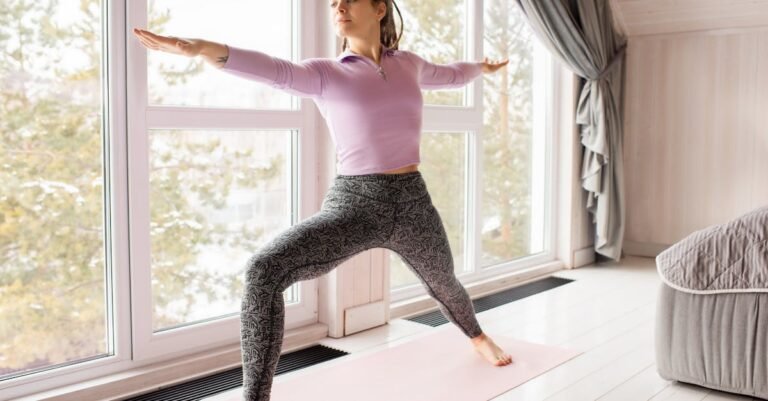Feeling stuck training at home but still dreaming of boosting your athletic game? Maybe you’re a basketball player wanting a higher jump, a soccer star needing quicker feet, or just someone who loves sports and wants to feel more explosive, but the gym isn’t an option right now. You know you need something more than just push-ups and jogging. Well, you’ve landed in the right spot! This article is your guide to understanding and doing plyometric workouts right in your living room or backyard. We’ll break down what plyometrics are, why they’re awesome for athletes, and how to do them safely and effectively without fancy gear. Get ready to unlock some serious power and agility!
What Exactly Is Plyometrics Anyway?
Okay, let’s ditch the science jargon. Think about jumping. Right before you leap, you quickly dip down, right? That quick dip stretches your leg muscles like a rubber band. Then, BOOM, you explode upwards as that rubber band snaps back. That, my friend, is the magic of plyometrics! It’s all about exercises that use that super quick stretch-then-shorten muscle action (called the stretch-shortening cycle, if you wanna get technical) to make you more powerful. It trains your muscles and nerves to react faster and produce more force in less time. So, instead of just lifting weights slowly, you’re teaching your body to be bouncy and explosive.
Why Bother with Plyo? The Big Payoffs for Athletes
So, why add jumping and bouncing to your routine? Because it directly translates to better performance on the field, court, or track. Want to jump higher for rebounds or volleyball spikes? Plyo helps. Need to sprint faster to beat a defender or steal a base? Plyo builds that explosive speed off the mark. How about changing direction quicker to juke an opponent or react to a play? Yep, plyo improves that agility too. It essentially teaches your body to use energy more efficiently, turning strength into actual athletic power. It’s like upgrading your body’s engine to go from 0 to 60 way faster.
Safety First! Avoiding Injury When Jumping Around
Now, before you start bouncing off the walls (literally!), let’s talk safety. Plyometrics puts stress on your muscles, tendons, and joints, so doing too much too soon, or doing it wrong, is a recipe for injury. Always, always warm up thoroughly first. Think dynamic stretches like leg swings, arm circles, and torso twists. When you land, land softly – like a cat. Knees bent, absorbing the impact through your muscles, not jarring your joints. Start with lower intensity exercises and fewer reps. Don’t do plyo every day; your body needs time to recover. And please, don’t do intense jumping on super hard surfaces like concrete. A gym mat, grass, or even carpet is better.
Getting Started: Foundational Plyo Moves You Can Do Today
Ready to give it a try? Let’s start with some basics you can do almost anywhere. No equipment needed for most!
- Squat Jumps: Stand with feet shoulder-width apart. Lower into a squat, then immediately explode upwards, jumping as high as you can. Land softly back into the squat position. That’s one rep.
- Box Jumps (Low Box/Step): Find a sturdy, low box or step (start really low, like 6-12 inches). Stand facing it, dip down slightly, and jump up onto the box, landing softly with bent knees. Step back down, don’t jump down.
- Lateral Bounds (Small): Stand on one leg. Hop sideways, landing softly on the other leg. Keep the hops small and controlled at first, focusing on balance and soft landings.
- Line Hops: Imagine a line on the floor. Hop back and forth over it quickly, either front-to-back or side-to-side, staying on the balls of your feet.
Start with maybe 2-3 sets of 5-8 reps for the jumps, and 15-20 seconds for the hops. Focus on quality over quantity!
Level Up: Adding Intensity to Your Home Plyo Routine
Once you’ve mastered the basics and feel comfortable, you can slowly dial up the intensity. How? You can jump higher, react faster between jumps, or move to slightly more demanding exercises. For example, maybe that low box jump feels easy. Try a slightly higher, stable surface (always prioritize safety!). Instead of basic squat jumps, try tuck jumps, where you bring your knees towards your chest in the air. Or progress lateral bounds to cover more distance. Single-leg hops, where you hop forward or sideways on one foot, are also a great step up. Remember, the goal is still maximum effort on each jump, followed by enough rest to do it again with power.
Putting It All Together: Sample At-Home Plyo Workout
Okay, let’s imagine a simple workout. Remember, this is just an example, and you should adjust it based on your fitness level. Let’s say our fictional friend “Alex,” a high school soccer player training at home, does this twice a week after a good warm-up:
- Squat Jumps: 3 sets of 8 reps (focus on height and soft landing)
- Low Box Jumps: 3 sets of 6 reps (focus on explosive jump, step down)
- Lateral Bounds: 3 sets of 5 hops per side (focus on control and distance)
- Line Hops (Side-to-Side): 2 sets of 20 seconds (focus on quickness)
Alex makes sure to rest for about 60-90 seconds between sets to recover properly and give max effort on each jump. The whole plyo part of the workout might only take 15-20 minutes, but it’s intense!
Listen to Your Body: Rest and Recovery are Key
This is super important. Plyometrics is powerful stuff, and your body needs time to adapt and rebuild stronger. Doing plyo workouts 1-2 times a week is usually plenty, especially when you’re starting out or doing other intense training. Make sure you have at least 48 hours of rest between plyo sessions. Pay attention to how you feel. If your legs feel heavy, overly sore, or you notice any joint pain, take an extra rest day or back off the intensity. Pushing through pain with plyometrics is rarely a good idea. Recovery – including enough sleep and good nutrition – is just as important as the workout itself for getting those performance gains.
So, there you have it! Plyometrics might sound fancy, but it’s really about using explosive movements you can practice right at home to seriously boost your athletic skills. We’ve covered what plyo is (think rubber bands!), why it’s great for getting faster and jumping higher, and crucially, how to start safely. Remember those basic moves like squat jumps and low box jumps, always warm up, and land softly. As you get stronger, you can carefully add intensity. Most importantly, listen to your body and give it the rest it needs. You don’t need a state-of-the-art gym to build explosive power – just a little space, some knowledge, and the drive to improve!










